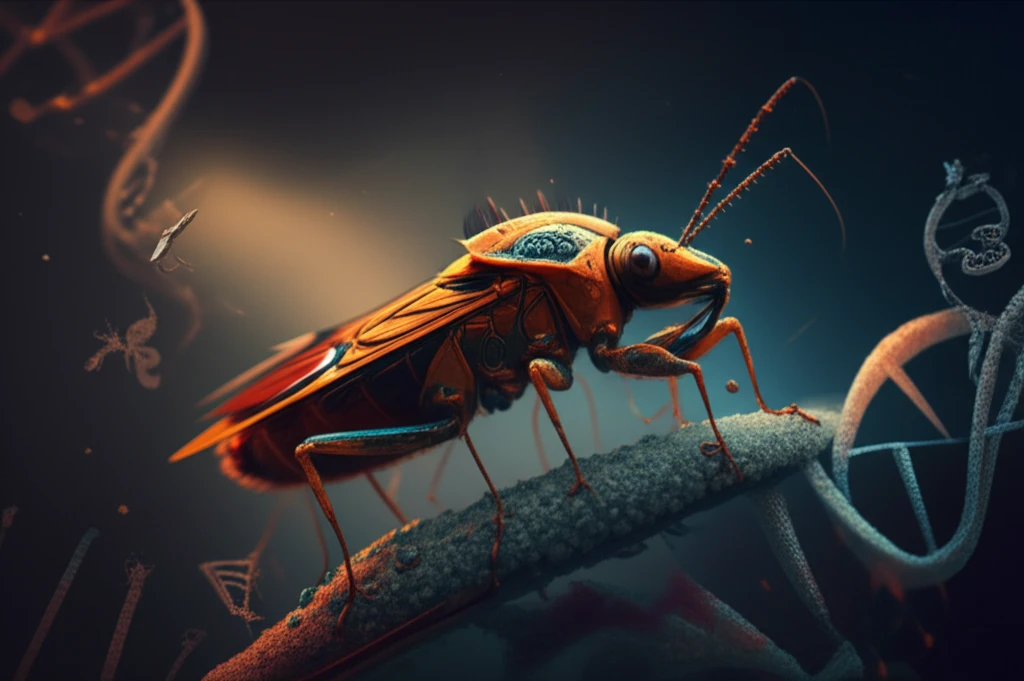
Decoding the Assassin Bug: What the Inara alboguttata Genome Reveals
"Scientists map the complete mitochondrial genome of a unique assassin bug species, opening new doors for understanding insect evolution and biodiversity."
The world of insects is incredibly diverse, and understanding their genetic makeup is key to unlocking secrets about evolution, biodiversity, and ecological interactions. Among these fascinating creatures are assassin bugs, known for their predatory behavior and unique adaptations. Recent research has focused on mapping the mitochondrial genome of a specific species, Inara alboguttata, offering a deeper look into its genetic structure and its place in the insect world.
In this study, scientists successfully sequenced and analyzed the complete mitochondrial genome (mitogenome) of Inara alboguttata, an assassin bug found in China. The mitogenome provides a wealth of genetic information, including the arrangement of genes, the presence of specific DNA sequences, and clues about the bug's evolutionary history. This detailed map is a significant step forward in understanding the genetic diversity within the Reduviidae family.
The research highlights the key features of the Inara alboguttata mitogenome, comparing it to other assassin bug species to reveal evolutionary relationships. This information is crucial for understanding the biodiversity of insects and can potentially contribute to advancements in pest management and conservation efforts.
Unlocking the Genetic Code: Key Findings of the Inara alboguttata Mitogenome

The mitogenome of Inara alboguttata is a circular DNA molecule consisting of 15,436 base pairs. This genome contains a total of 37 genes, including 13 protein-coding genes, 22 transfer RNA (tRNA) genes, and two ribosomal RNA (rRNA) genes, along with a control region. This arrangement is typical of most insects, indicating a shared evolutionary history.
- Thirteen protein-coding genes essential for cellular functions.
- Twenty-two tRNA genes, vital for protein synthesis.
- Two rRNA genes, which play a crucial role in ribosome structure and function.
- A control region spanning 860 base pairs, containing tandem repeats and influencing genome replication and transcription.
Why This Matters: Implications for Biodiversity and Conservation
Mapping the mitochondrial genome of Inara alboguttata provides valuable insights into the genetic diversity and evolutionary relationships of assassin bugs. By understanding the genetic makeup of these insects, scientists can better assess their biodiversity and develop more effective conservation strategies.
The identification of specific genes and DNA sequences within the mitogenome can also have practical applications in pest management. For example, this knowledge could be used to develop targeted pest control methods that are less harmful to beneficial insects and the environment.
Further research is needed to fully understand the evolutionary history and ecological roles of Inara alboguttata and other assassin bug species. By continuing to explore the genetic diversity of these fascinating insects, we can gain a deeper appreciation for the complexity of the natural world and work towards protecting it for future generations.
